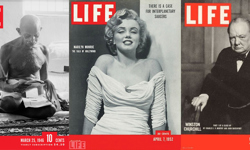Revolution or evolution - that's the choice faced by most evening newspaper editors today confronted by an aging readership profile and increasing media promiscuity among younger cohorts.
The truth is that an evolutionary tweak here and there just won't cut it anymore, but undertaking a major redesign and shift in the positioning of a traditional evening newspaper is not for the faint hearted. So has the newspaper revolution being played out in Norwich resulted in casualties? Here's the story so far …
It’s tough out there
It’s no secret that national, regional and local daily newspapers are experiencing a very gradual long-term circulation decline. Unfortunately, this is at least one trend that has reached sleepy rural Norfolk.
Last year’s January to June ABC for the Norwich Evening News was –2.7%; but this included a significant circulation boost due to Norwich City winning the old First Division and promotion to the Premiership. The second half of the year resulted in a –4.7% decline, as the harsh realities of life among the UK’s football elite started to impact on sales, but this was still slightly better than the industry average for an evening newspaper (incidentally the Evening News is 100% actively purchased and has been for a number of years).
The first half of 2005 was likely to see the rate of circulation decline year on year temporarily accelerate as the title struggled to match the inflated sales of Norwich’s 2004 championship winning run, particularly as the club entered the new year at the wrong end of the Premiership league table.
This may sound like a circulation manager’s dream excuse – but nonetheless it’s a fact. What is also a fact, however, is that there are long-term trends affecting the sales of the Evening News:
* An aging (and literally dying) readership profile.
* Consumer and lifestyle trends – changes to work, shopping and leisure routines.
* Increasing competition from other media, particularly the internet. Broadband is now fundamentally changing the way people use the web (eg TV viewing typically drops by 5% so what happens to newspaper readership?).
* Cover price rises have been higher than RPI which affect consumers’ perception of value for money.
* The gradual collapse of traditional newsagent home delivery services and the dominance of the major supermarket chains.
* The strength of the Evening News’ main competitor, the Eastern Daily Press, particularly relating to the morning title’s dominance of the classified platforms, both in print and online. For example, Jobsearch on www.EDP24.co.uk, the EDP’s online service, attracts the second highest number of unique visitors of all Archant’s websites.
* The compound seasonal effect of Easter, May Day bank holiday, Whitsun and the school summer break, which conspire to interrupt the newspaper purchasing habit. Virtually overnight sales drop by 3% to 4% and stay there for the next 12 months when they drop again.
Previous efforts to reverse these long-term trends have had mixed success. The Evening News was re-launched in 2001 with a more campaigning positioning and although sales stabilised for a while, readership data revealed this was due to increased loyalty among current readers rather than growing the franchise. Similarly, an initiative to launch a listings magazine designed to appeal to younger readers had, despite its apparent popularity with this target group, failed to create a significant uplift in casual sales to offset the general rate of sales decline.
Is the future any brighter?
Against this background we commissioned the Future Foundation to undertake a major research programme. The objectives of the research were to answer two simple questions:
1. What do people want in terms of news and information in the future (ie content)?
2. How do people want to access news and information in the future (ie media or delivery channel)?
Consequently the research was designed to identify opportunities to develop both the Evening News and new product concepts and addressed the following issues:
1. Given that the current readership of news products is skewed towards older age groups, what can be done to attract a younger audience without alienating existing readers?
2. Are younger age groups likely to become regular readers of existing news products later in life, or do they need new products to attract them?
3. To what extent should the Evening News develop now to broaden its appeal in the long-term without alienating existing readers?
Big, challenging questions facing virtually every newspaper in the country. However, there was another equally important issue to address affecting the Evening News.
Some advertisers had formed a perception of the Evening News as too "downmarket" and unresponsive as an advertising medium because of the high proportion of its readership that was retired and "commercially inactive". Losing circulation was one thing; losing advertising revenue as well was a potential double whammy.
Ahead of its time
Almost a full year later, having spent £70,000 on consumer and advertiser research, conducted several concept development workshops and tested various prototype designs, the radical new look Norwich Evening News was launched. We bravely opted for revolution not evolution.
A number of key research findings provided the impetus for the changes we made. Happily, people still regarded the Evening News as the best source of in-depth news about Norwich. However, these days, national and world events are reported as they happen on TV and the internet, which has changed the role of a newspaper from being the medium to break news stories to providing detail and analysis. So we moved to a single edition that hits the streets at 10.45am (web breaks willing).
Similarly many people nowadays seem to have less time to sit down and read a paper, the majority preferring to consume the news quickly. So that’s why we introduced bite-size summaries called "Snapshots" at the start of lead stories for people who only have a few minutes to spare.
Of course regular readers of the Evening News generally loved the paper prior to the changes anyway – but even they thought it could be improved. There was a general feeling that the paper should be more positive about Norwich, balancing the inevitable bad news with more upbeat news about the city. After all, everyone agreed, Norwich is a great place to live and work, for shopping and leisure. That’s why the paper’s front-page design, general layout and the use of photographs and graphics, as well as new features and columnists, are now more in tune with a city that is going places.
Finally, we incorporated the word Norwich into the Evening News masthead for the first time in its history – to borrow a well known phrase it’s now obvious to everyone it does what it says on the tin.
Some of the natives are revolting …
Even though the market research was overwhelmingly positive we knew the changes would not be universally popular, particularly among a relatively small proportion of older regular readers.
Predictably, most of the post launch feedback we had from this disaffected group was of the "it ain’t broke so don’t fix it" kind. However, we hadn’t anticipated that so many of them would dig their heels in and reject the new format for what often appeared to us totally irrational reasons.
They didn’t like it and that was that – so within two to three weeks sales fell by around 3%, predominantly driven by losses in urban areas dominated by the traditional six day home delivered newsagent.
Post-launch research confirmed what we suspected, that some people just don't like change. When asked what could the Evening News do to win them over again the predictable answer was "change it back to the way it was".
However, when asked how much they missed the paper most said they didn't; they now got their news from local radio, TV and the city's free newspaper - which suggests they did not need much of an excuse to cancel the paper and the redesign gave them the opportunity they may have been looking for. It will be interesting to see if sales of the Evening News are more stable after the Whitsun watershed than usual, because we may simply have lost readers earlier than we would have.
… but others love it
The research told us that Norwich and the profile of its inhabitants was changing and that the Evening News had to keep pace with these changes. We predicted that the new design and positioning would result in a readership profile more middle-class, middle-aged and female than most evening newspapers and anecdotal evidence suggests this is happening. We will conduct a full readership survey within the next two months to verify this.
There is no doubt we have lost readers among lower income and retired groups in particular, but the chattering and professional classes in Norwich, the most commercially active group of consumers of keen interest to advertisers, have heaped universal acclaim on the new paper. The trick now is to convert this affection into sales.
The key to this is to get people to sample the product and use this to convert them to a regular purchase, which is why on the day of the launch we gave away 60,000 free copies of the paper.
Since then we have sold an additional 16,000 papers through in-store promotional activity in supermarkets with a subsequent 10% redemption rate to date from money-off vouchers enclosed in a polybag with the paper - we expect this to rise to 15% to 20%. We are now introducing Linksave promotions with a number of Archant weekly publications in locations within the Norwich drive to work area.
Merchandising, vending and HND
We have restructured our field sales team, introducing a call cycle for major casual sales outlets which will see them merchandised five days a week, and twice in the same day on the main grocery shopping days.
Our city centre vending operation is about to get a major revamp, introducing mobile vendors that will move with the crowds, particularly hitting the city centre bus terminals from 5.00pm as workers return to their cars at the many Park and Ride facilities now surrounding Norwich.
On the home delivery front we are running a campaign targeting those evasive lapsed readers. We are also canvassing successfully in areas that match our new target reader profile, using CCB's award winning PDA based direct marketing software and achieving order conversion rates of over 20%. We are also in the process of establishing a new model for a home delivery service in Long Stratton, which is commuter land for many Norwich based workers, which if successful could be rolled out to other commuter areas.
Despite the re-launch and all this marketing activity, we expect an improvement in our first half ABC to be very challenging. The second half of the year, when we expect to see the return of the Ipswich v Norwich local derby (interpret that any way you want) should be much better. Longer-term we are convinced our revolution will bring stability to newspaper sales and enable us to sustain advertising revenue growth. Time will tell.
| Footnote: Ketts Rebellion – 1549 Robert Kett, a landowner from Wymondham, led an army of 20,000 people against Norwich to protest against the enclosure of common land and the poverty of the peasantry. Kett approached the city from the west but found the gates heavily guarded. He therefore skirted round the city via Earlham, Bowthorpe and Sprowston until he arrived at Mousehold Heath. The mayor came out of Norwich to parley with Kett and was subjected to some discourtesy. A young boy reputedly lowered his breeches and exposed his backside to the mayor. The parley was unsuccessful. Nice! |










